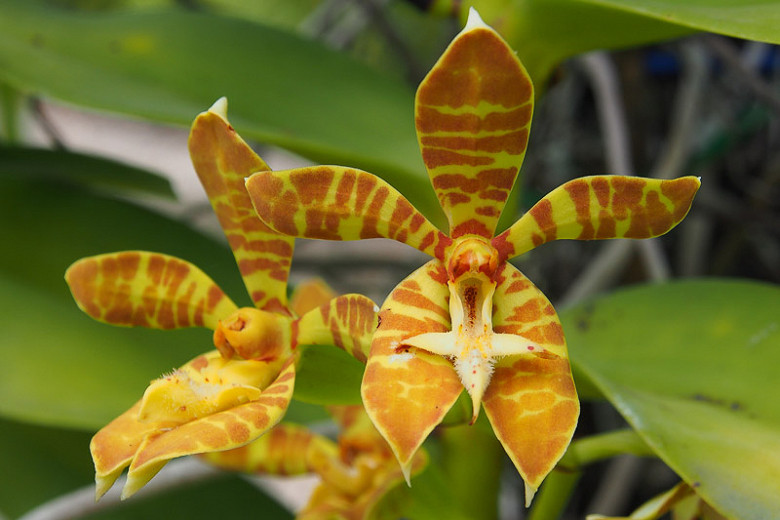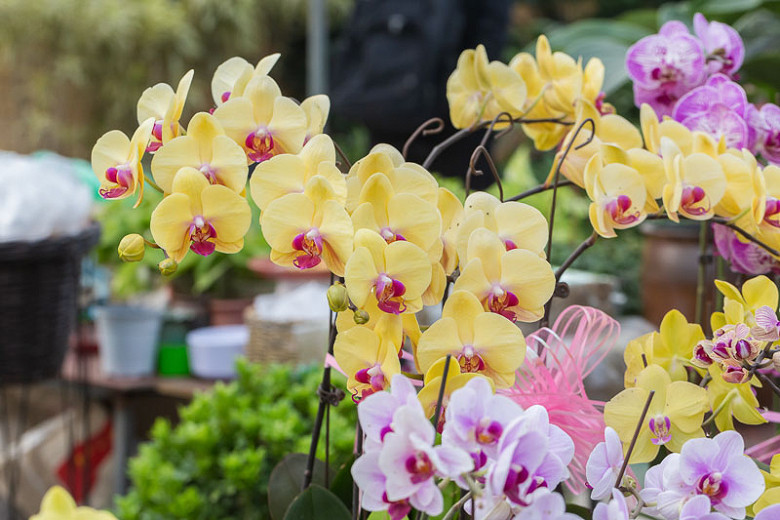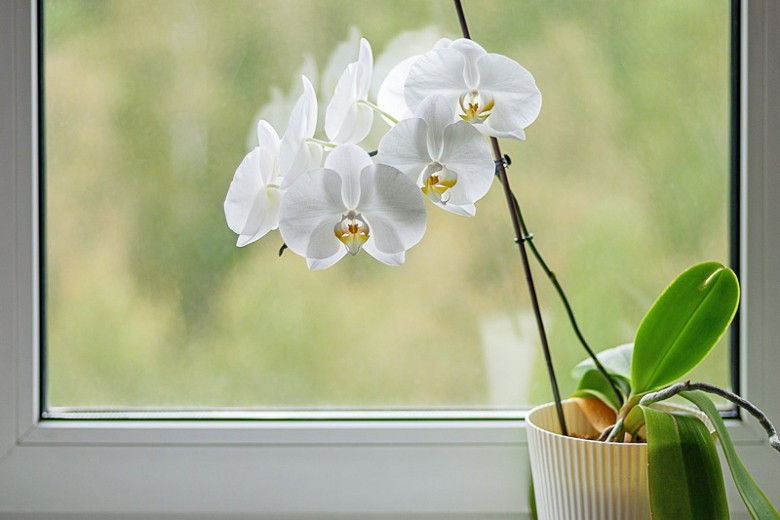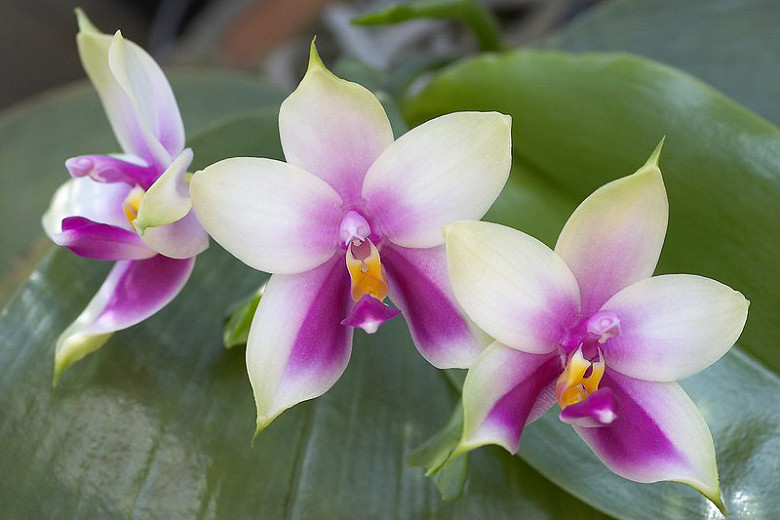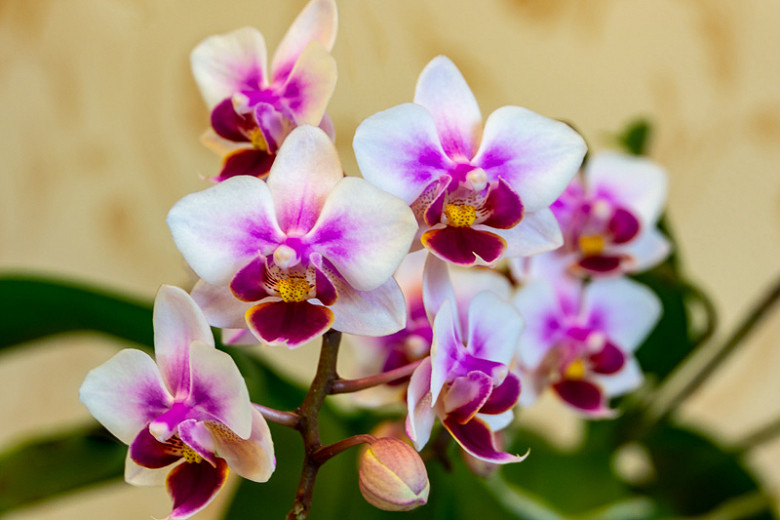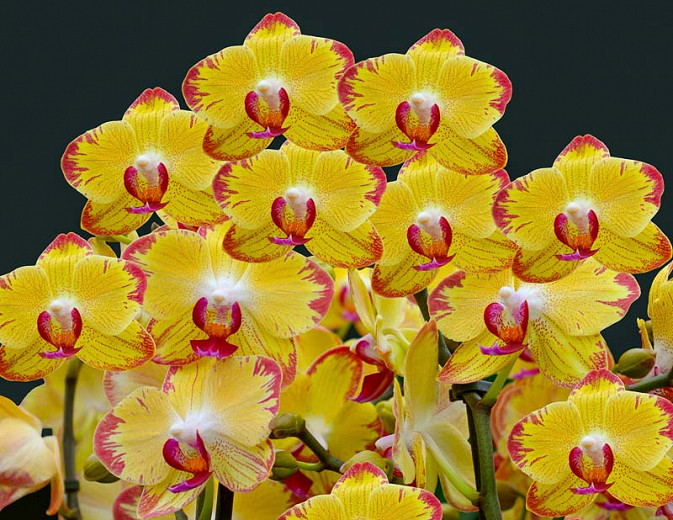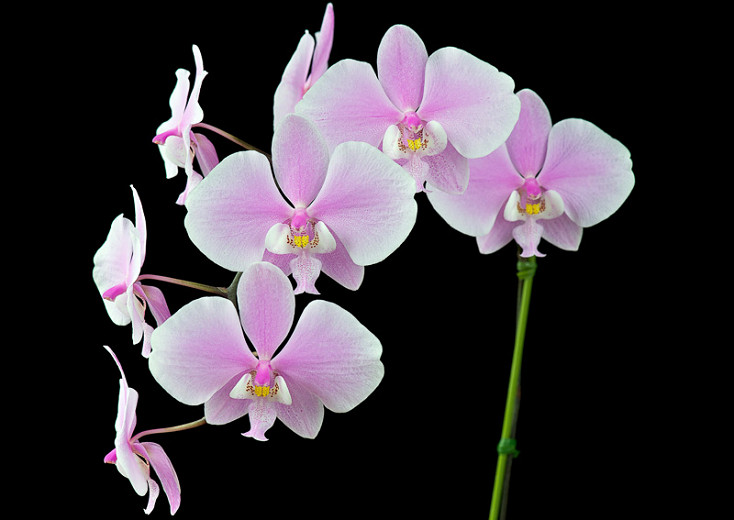Phalaenopsis cornu-cervi (Moth Orchid)
Phalaenopsis cornu-cervi (Moth Orchid) is an evergreen, epiphytic orchid boasting fragrant, waxy, star-shaped yellow flowers, up to 1-2 in. across (2-5 cm), blotched and barred with cinnamon-red, and exhibiting a white lip. Blooming at any time during the year, they open successively within a few months, 3-5 simultaneously. Each flower lasts about 4 weeks.
Phalaenopsis cornu-cervi (Moth Orchid) is an evergreen, epiphytic orchid boasting fragrant, waxy, star-shaped yellow flowers, up to 1-2 in. across (2-5 cm), blotched and barred with cinnamon-red, and exhibiting a white lip. Blooming at any time during the year, they open successively within a few months, 3-5 simultaneously. Each flower lasts about 4 weeks. The fleshy blossoms are borne on 7-12 branched, flattened inflorescences, 16 in. long (40 cm). The leaves are leathery, narrow, glossy bright green, 6-10 in. long (15-25 cm). Native to Southeast Asia, Phalaenopsis cornu-cervi can be found growing in lowland and riverine forests at elevations up to 2460 ft. (750 m).
- Grows up to 3-4 in. tall (7-10 cm).
- Grow in an open bark-based compost and position with good indirect light. An east or west window would be ideal.
- Needs a minimum night temperature of 71-75°F (22-24°C) and a daytime temperature of 89-98°F (32-37°C) in summer.
- Needs a minimum night temperature of 60-66°F (16-19°C) and a daytime temperature of 86-96°F (30-36°C) in winter.
- Fluctuating temperatures can cause bud drop on plants with buds ready to open.
- Maintain high humidity (55-70%) for most of the year by setting the plant on a tray of gravel, partially filled with water, so that the pot never sits in the water.
- Water moderately throughout the growing season. Avoid letting the plant sit in water. Mist the plant lightly in summer.
- Water only in the morning, so that the leaves dry by nightfall. This will prevent rot.
- Feed once a week or once every two weeks during the growing season with a special liquid fertilizer for orchids, taking 1/4-1/2 of the dose indicated on the vial. In winter, fertilization should be reduced to once a month.
- Propagate by division. Cuttings or offshoots may be rooted successfully when roots are 1 in. long (2.5 cm).
- Once the flowers have faded, cut the flowering stalk back to just above the second node (joint) visible beneath the spent flowers. A new flowering side shoot may develop.
- Repot every 2-3 years, preferably in spring and never during the rest period.
- To repot, remove all the old medium from the roots, snip off any diseased or dead roots, and spread the remaining roots over a handful of medium in the bottom of a new pot. Fill the rest of the pot with medium, working it among the roots, so that the junction of the roots and the stem is at the top of the medium. Gently ensure the compost is pressed down firmly around the perimeter of the pot. Drain the plant thoroughly and do not allow it to sit in water.
- Generally disease free. Keep an eye out for aphids, glasshouse red spider mites, and mealybugs.
- Native to India, Myanmar, Thailand, Laos, Vietnam, Nicobar Islands, Malaysia, Java, Borneo, Sumatra, and the Philippines.
Tip for reblooming
- If a plant is large and healthy but does not produce flowers in a reasonable time, then reduce the temperature by 8°F (5°C) for four weeks, and a flower spike will usually develop.
Requirements
| Hardiness | 10 – 12 |
|---|---|
| Plant Type | Orchids |
| Plant Family | Phalaenopsis- Moth Orchids |
| Exposure | Partial Sun |
| Season of Interest | Spring (Early,Mid,Late)Summer (Early,Mid,Late)FallWinter |
| Height | 3" – 4" (7cm – 10cm) |
| Water Needs | Average |
| Maintenance | Average |
| Soil Drainage | Well-Drained |
| Characteristics | Fragrant, Showy, Evergreen |
| Garden Uses | Patio and Containers |
